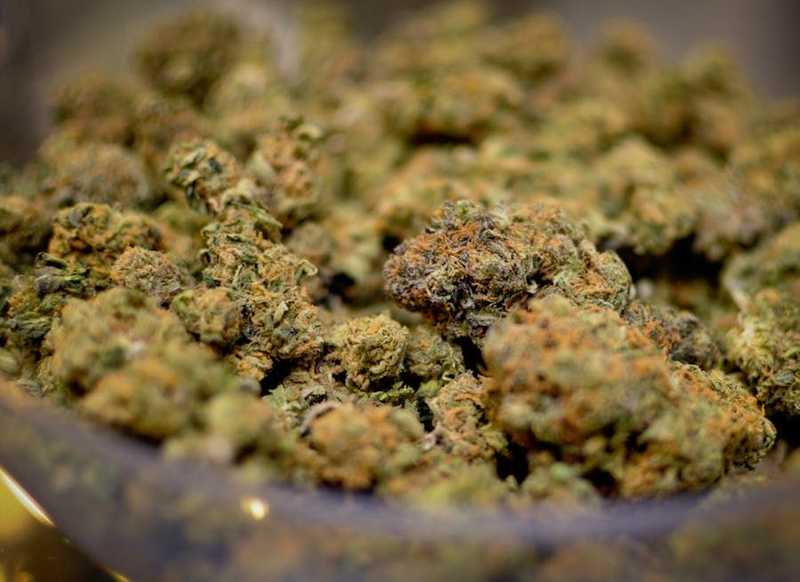In the past few years, our collective knowledge of cannabis has skyrocketed. Five years ago, even the most dedicated cannabis connoisseurs could be forgiven for not knowing what cannabidiol (CBD) was. Today, that’s all changed, and now CBD is a critical part of understanding the plant and marijuana’s medical benefits.
While tetrahydrocannabinol (THC) and CBD are the cannabinoids most people know, there are plenty of others in the cannabis plant—more than 100 of them. Here are a few others to familiarize yourself with so you can better pinpoint the cannabis strains that will give you the benefits you’re looking for.
1. Cannabichromene (CBC)
CBC is typically the third most-prevalent cannabinoid in marijuana. Like CBD, CBC is non-psychoactive. This compound actually seems to play a synergistic role in the body. CBC doesn’t bind with the receptors in our endocannabinoid system (ECS). However, one thing it does do is help kickstart the body’s ECS by stimulating other receptors in the brain that assist with ECS function.
RELATED: WANT TO IMPROVE YOUR HEALTH? MAKE SURE YOUR ENDOCANNABINOID SYSTEM IS BALANCED
Most studies on CBC so far have been performed on animals, but there’s some early evidence it may help with:
- Depression
- Pain relief
- Neurogenesis
In human trials, there’s some evidence that CBC could help reduce acne and alleviate other skin conditions.
2. Cannabinol (CBN)
CBN has little to no psychoactive effects. One interesting aspect of CBN is that it’s actually a derivative of THC. The older the marijuana is, the more CBN it probably has, as THC turns into CBN when exposed to UV light and air. If you’ve ever noticed that older cannabis seems to make you sleepy, it may have something to do with the sedative effects of CBN.
Perhaps most interestingly, CBN also seems to be an antibiotic, but how it works in that capacity is still not well understood.
3. Tetrahydrocannabivarin (THCV)
THCV is psychoactive like THC. One study suggests THCV shows “significant intoxicating effects,” but without the loss of verbal recall and short-term memory as can happen when consuming THC. The same study also found that THCV doesn’t change a person’s heart rate in the same way THC does.
There are some pretty exciting possibilities with a cannabinoid that seems to blunt THC’s harsh edges. Unfortunately, there’s not much in the way of medical research on THCV. However, one test showed THCV led to weight loss in mice. In another study, THCV helped reduce seizures in mice.
4. Cannabigerol (CBG)
Another non-psychoactive cannabinoid, CBG may be one of the most exciting compounds in isolation. A quick rundown of benefits observed in animal studies reads like a list of all that cannabis can help treat:
Almost all of these studies were very small in scale and done on animals, but it’s still a promising list of potential benefits for humans.
We’re still in the early stages of research, and CBG is nowhere near as prevalent in most cannabis strains as CBD is. However, the two cannabinoids appear very similar.
5. Delta-8-Tetrahydrocannabinol
The THC we know and love is technically delta-9-tetrahydrocannabinol, so these two cannabinoids are obviously pretty similar, but there are some notable differences. The biggest is that while delta-8-THC is psychoactive, it’s less so than that of delta-9.
Stretching back to the ’70s, the American government started looking into delta-8-THC because it showed some cancer-fighting capabilities. In the ’90s, researchers in Israel confirmed those results. Now more research is being done to look at how delta-8-THC affects appetite and other ailments commonly treated with cannabis. It’s also been observed to be a powerful anti-emetic, which can help cancer patients experiencing nausea during chemotherapy.
Early Research on Cannabinoids Shows Promise, But More Research Is Needed
While all of these cannabinoids have exciting research behind them, it’s important that we don’t jump to conclusions. People acting on early evidence has been a huge problem in the past. Drugs like thalidomide, prescribed heavily in the ’60s for insomnia and morning sickness, and even opiates showed great promise in the early stages, but came with terrible costs down the road.
While we know cannabis has none of the dangerous side effects of opioids and other pharmaceuticals, we’re mostly consuming all of these cannabinoids together with other compounds and terpenes. All of these chemicals work in symphony, pushing and pulling on each other, as well as with the endocannabinoids our own body produces naturally.
It’s highly unlikely that any of these compounds are dangerous—if they were, we’d likely have discovered those dangers in cannabis. However, these compounds may behave differently together than they do in isolation, and barely traceable amounts in a strain of marijuana might act differently when consumed as a pure concentrate.
It’s easy for some people to take early results and push products as miracle cures. There are so many exciting possibilities with these compounds, but more research is required before we can know what these compounds do and understand exactly how they work.
Photo credit: Dank Depot
